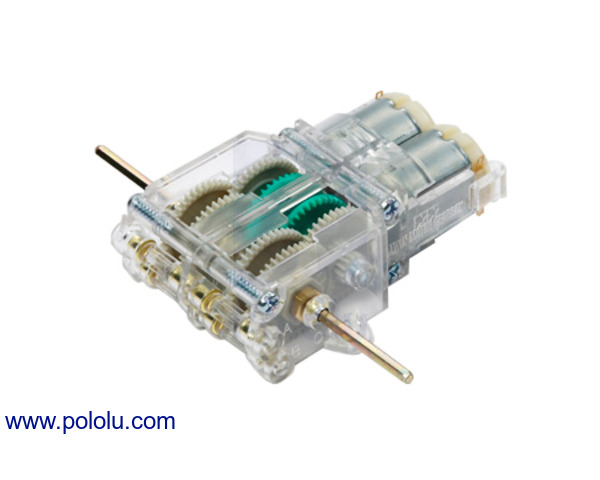Tamiya 89915 Twin-Motor Gearbox Kit - Clear
Tamiya’s twin-motor gearbox consists of two independent brushed DC motors and gearboxes in one compact housing, making it perfect for small robots. You can assemble the gearboxes to have a 58:1 or a 204:1 gear ratio.
| Description | Specs (7) | Pictures (0) | Resources (3) | FAQs (6) | On the blog (0) |
|---|
- Does this gearbox come with motors?
- Yes, motors are included with the Tamiya gearbox kits.
- How do I order the correct gear ratio for this gearbox?
- The Tamiya gearbox kits come with all of the gears and parts necessary to build the gearbox in any of the possible gear ratio configurations.
- What are the specifications for the motors included in this gearbox kit?
- The Tamiya gearbox kits come with motors made by Mabuchi; please see the Mabuchi motor datasheet in the “Resources” section of this gearbox page for motor specs (be sure to look at the correct model number in the datasheet as indicated in the “Resources” link).
- Is this gearbox suitable for my robot or project?
- This gearbox is an eduational kit that you have to put together yourself. It is designed for use in small, indoor projects. The gearbox comes with plastic gears and small, low-voltage motors; if you are looking to build anything meant to work outdoors or in a rugged setting, you should be ready to replace the gearbox often or consider using a more robust, pre-assembled gearbox.
- What kind of speed and torque will I get from this gearbox?
- You can extrapolate a theoretical torque and RPM of the gearbox based on the gear ratio you build, the motor voltage, and the motor speed and torque. In general, this gearbox is a toy, so if you need very precise specifications, you might consider a more industrial gearbox.
- How will operating voltage affect motor lifetime? How bad is it to run these Tamiya motors at voltages exceeding the suggested 3 V maximum?
- In general, the higher your voltage, the sooner your motors will die. Because these are toy motors, the manufacturer does not provide any official cycle-life specifications, but a customer of ours has conducted his own series of experiments that shed light on the relationship between operating voltage and motor lifetime. You can view Adam’s results here.









